If you buy a new phone these days, there’s a good chance you won’t see a USB block in the box unless it supports a proprietary fast-charging standard like VOOC from Oppo and OnePlus. That’s a big deal, especially as tech gets more portable and pocketable. Getting the best phone charger for your needs is crucial, so we have the key details you’ll want to spot and some solid product recommendations.
Read more: Best portable chargers for USB-C phones: Universal charging on the go
Depending on your device load and whether you’ll be using any given adapter at home or on the go, you may decide to go for a compact, single-port wall adapter that fits snugly in your backpack or purse or a more robust block, acting as a semi-permanent fixture hanging off an outlet in your bedroom or lounge that can speedily juice up multiple devices at once. We’ll feature a little bit from both categories as we go on. You can also scroll to see some acronyms to look for when making your purchase considerations.
Best USB multi and single-port USB chargers: Our top picks
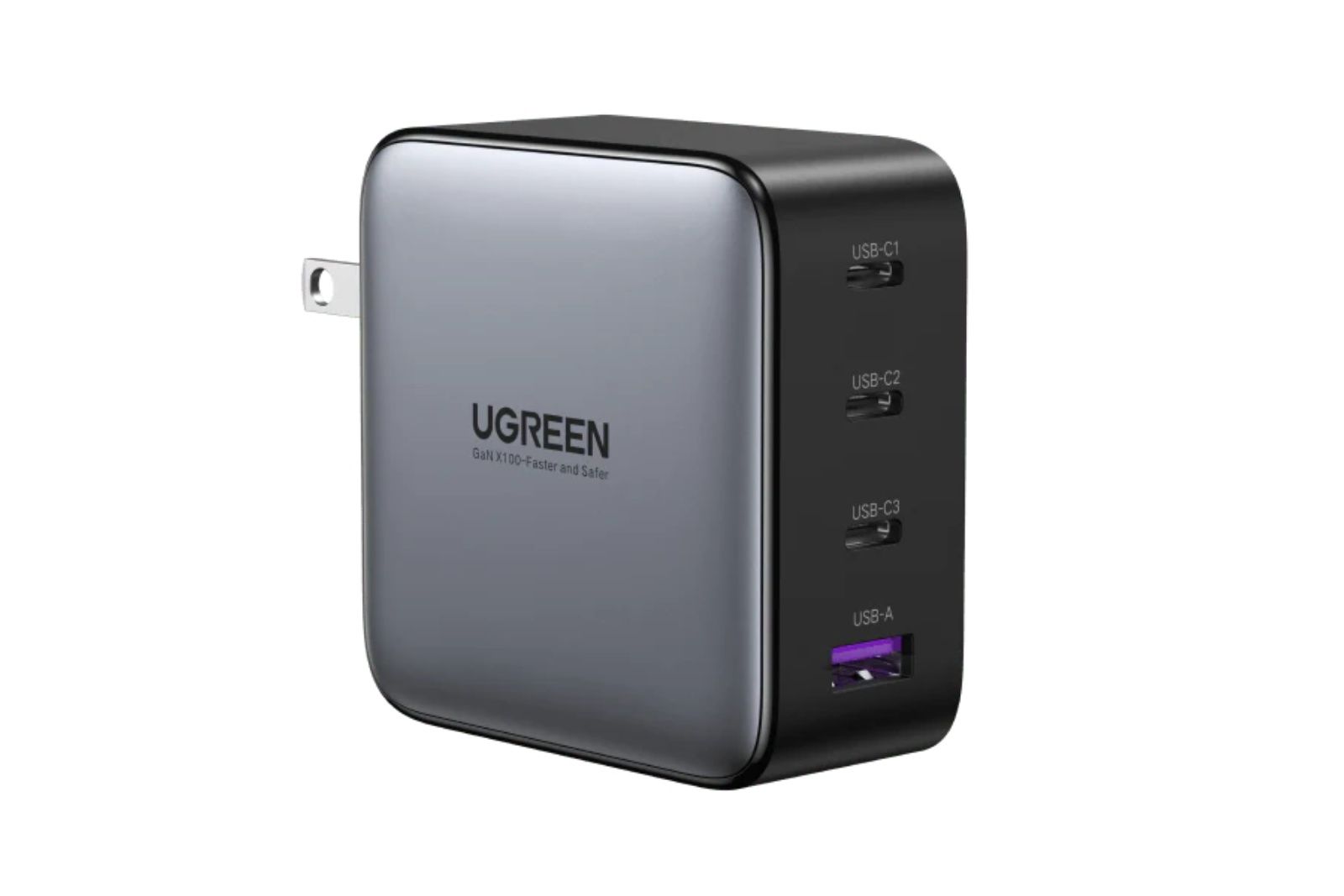
Ugreen / Pocket-lint
Ugreen Nexode 100W Charger
1. Best multi-port USB charger overall
Plenty of ports and power
A smaller, but still powerful four-port wall adapter with integrated folding prongs, Ugreen’s 100W Nexode charger should be the right fit for most people.
- Maximum Power
- 100W
- Charging Ports
- 3 x USB-C, 1 x USB-A
- Smart Features
- USB PD 3.0, Quick Charge 4+
- Four ports is enough for most people
- 100W maximum single-device output
- Integrated plug prongs
- Outlet hog, even with GaN
Everyone’s needs differ, and getting the right tool to meet that need is important. Ugreen also makes a four-port 100W adapter under its Nexode brand to fit the bill. This block along with many others on this list takes advantage of gallium nitride (GaN) technology that allows accessory makers to shrink down adapter sizes by a fair margin compared to older ones with similar capacities. If you’re looking to learn more on the advantages of GaN, we dedicated a piece explaining what exactly GaN is, and why it is helpful.
The Ugreen Nexode 100W charger has an integrated plug-head and features three USB-C ports and one USB-A port. The top two ports can charge at 100W, while the third USB-C and USB-A ports go at 22.5W. When all four ports are in use, the top USB-C port provides up to 45W, the middle one 30W, and the other two 10.5W.
It’s much more affordable than Ugreen’s own 200W option you’ll read about below, but still provides huge power via USB PD 3.0 (PPS) and Quick Charge 4+ for multiple devices.
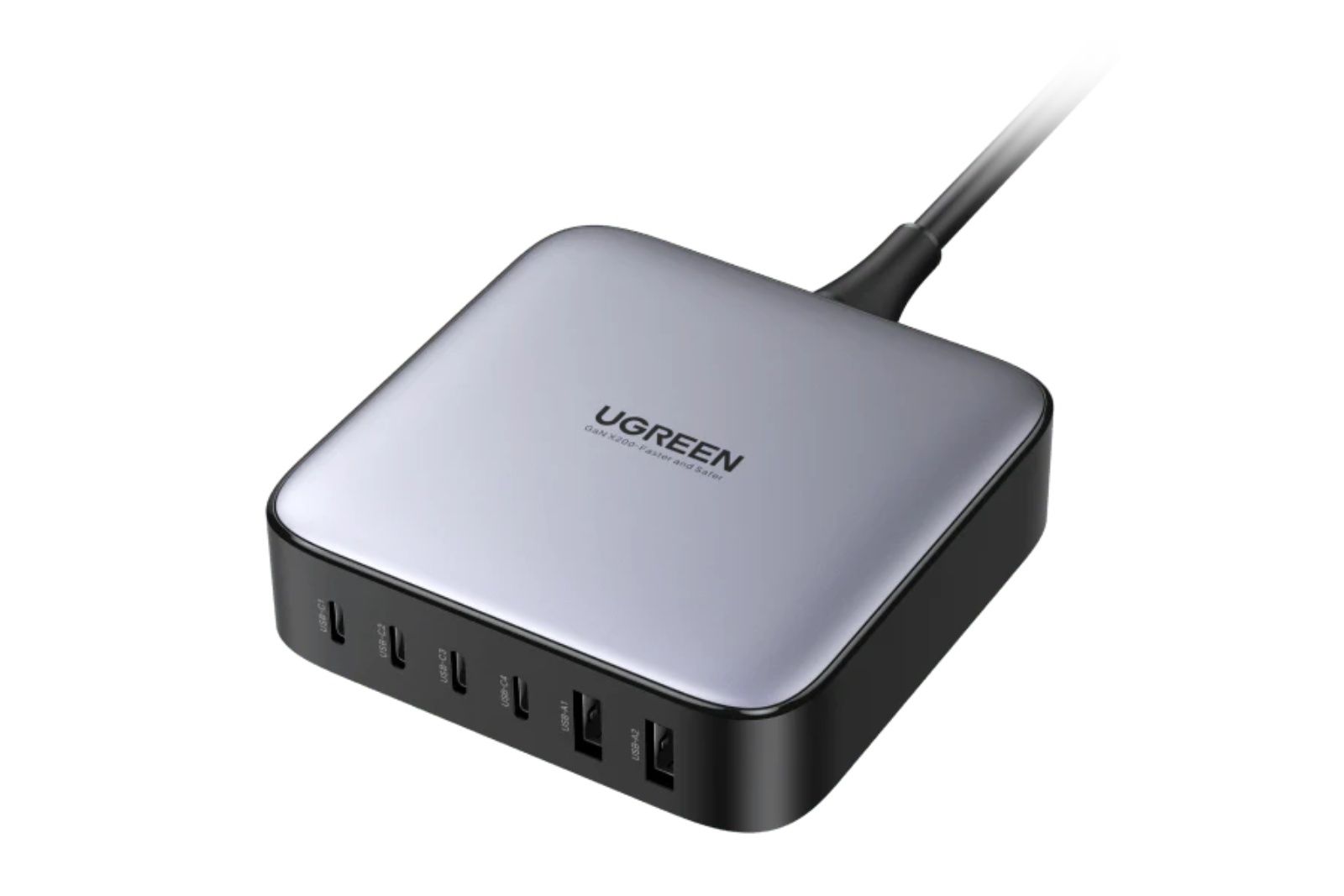
Ugreen / Pocket-lint
Ugreen Nexode 200w
2. Best multi-port USB charger for power
The best of the best
$130 $200 Save $70
Offering an insane amount of power for up to six devices at once in a relatively tiny footprint, if you want the best USB-C charger that money can buy, look no further.
- Maximum Power
- 200W
- Charging Ports
- 4 x USB-C, 2 x USB-A
- Smart Features
- USB PD 3.0, Quick Charge 4+
- 200W spreads across six devices
- Delivers up to 100W simultaneously to two devices
- Supports USB-A and USB-C connections
- Discrete plug head and cable
- $200 is a bit much for an adapter
Emperor Palpatine isn’t the only one who can amass “unlimited power” – you can get pretty close with Ugreen’s 200W Nexode multi-port adapter. This absolute unit comes with four USB-C ports and two USB-A ports. It also relies on a dedicated AC cable and plug-head to get to the outlet. The top two USB-C ports can charge your MacBooks or Windows tablets simultaneously at 100W apiece. The other two Type C ports can individually max out at 65W while the full USB ports cap at 22.5W.
The Nexode 200W adapter is a bit pricey, but you do get a complimentary 1-meter Type C to Type C cable. It supports USB Power Delivery 3.0 (including PPS) and Quick Charge 4+.
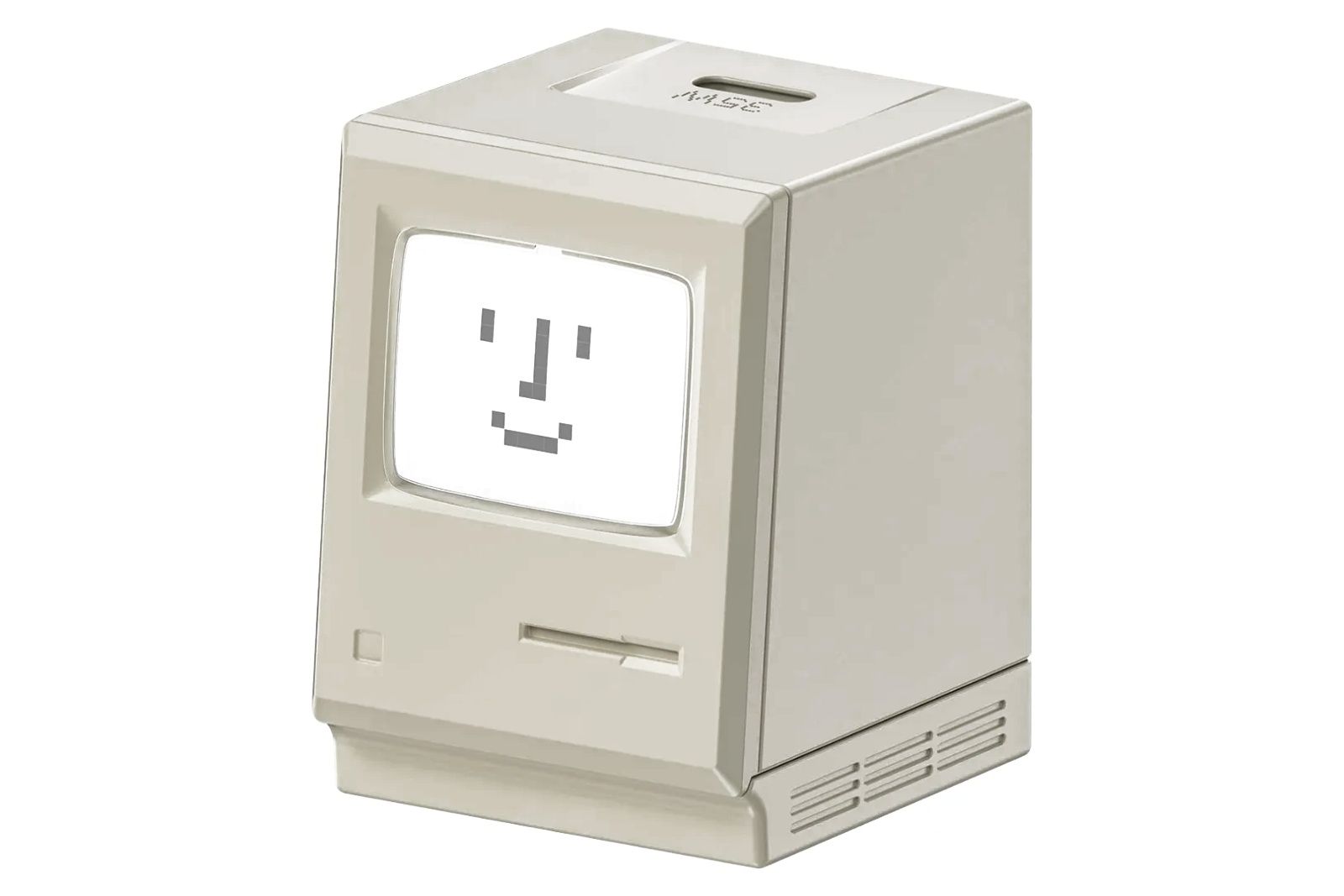
Shargeek / Pocket-lint
Shargeek Retro 35w Charger
3. Best unique USB-C charger
A fun form factor and practical purpose
$40 $60 Save $20
Not only is it tiny and portable, but it’s also the coolest-looking charger around. With 35W on tap, it’s not slow either. Who says chargers have to be boring?
- Maximum Power
- 35W
- Charging Ports
- 1 x USB-C
- Smart Features
- USB PD 3.0, Quick Charge 4+
- Adorable retro design
- Comes with cute stickers and lights up
- Should charge most phones quickly
- It’s a bit bulky for the wattage
- Also slightly pricey for the wattage
Who said charging can’t be plain fun? Shargeek’s adorable Retro charger is styled after an old Apple Mac in incredible detail, complete with that aging beige colorway. To make things even more exciting, the screen illuminates while charging with different colors corresponding to your charging speed. It even comes packed with a selection of stickers, so you can choose what your little computer is displaying. Its folding prongs also help make it just that much more portable. And while 35W might not be enough for a laptop, it’ll charge most phones at full speed.
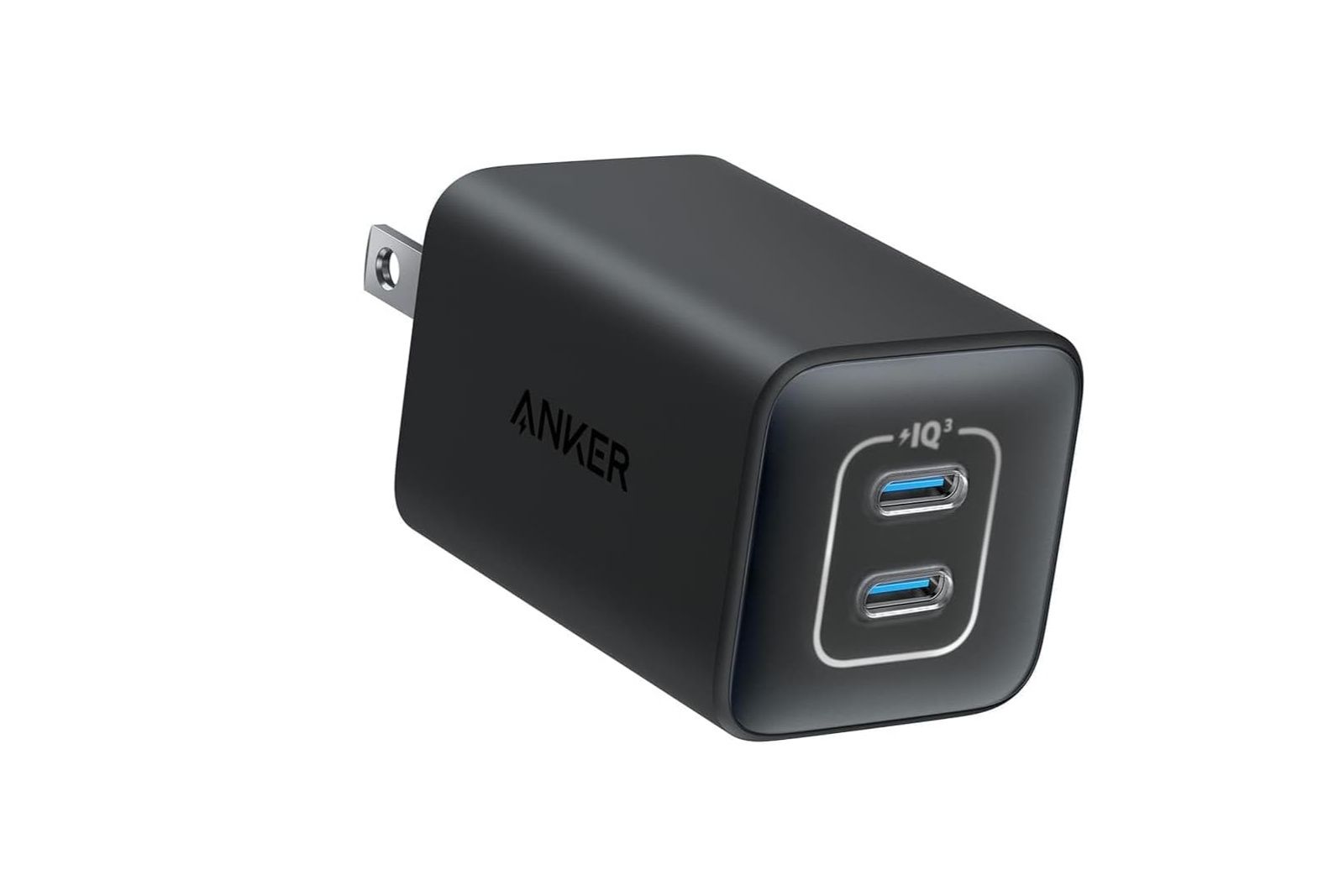
Anker / Pocket-lint
Anker 523 Charger (Nano 3, 47W)
4. Best compact multi-port USB charger
Lipstick wattage
An absolutely miniscule two-device wall adapter from Anker. This wart from the Nano 3 lineup can charge at up to 45W for one device or 27W and 20W for a pair.
- Maximum Power
- 47W
- Charging Ports
- 2 x USB-C
- Smart Features
- USB PD 3.0, Quick Charge 4+
- Can charge one device at 45W
- Or two devices at 27W and 20W
- Balances size with versatility
- Only available from Amazon
Anker also has a GaN adapter in its Nano 3 series that can charge two devices simultaneously via USB-C, pushing a total of 47W to them – that’s 27W for the one connected to the top port and 20W for the other. You can also plug just one device in and get up to 45W. It’s probably the most powerful lipstick-sized item you’ll own.
As it supports Anker’s proprietary PowerIQ 3.0 technology, it should be able to work with USB Power Delivery, PPS, and Quick Charge 4+. Oddly, Anker does not sell this charger on its site. Amazon works well enough, though.
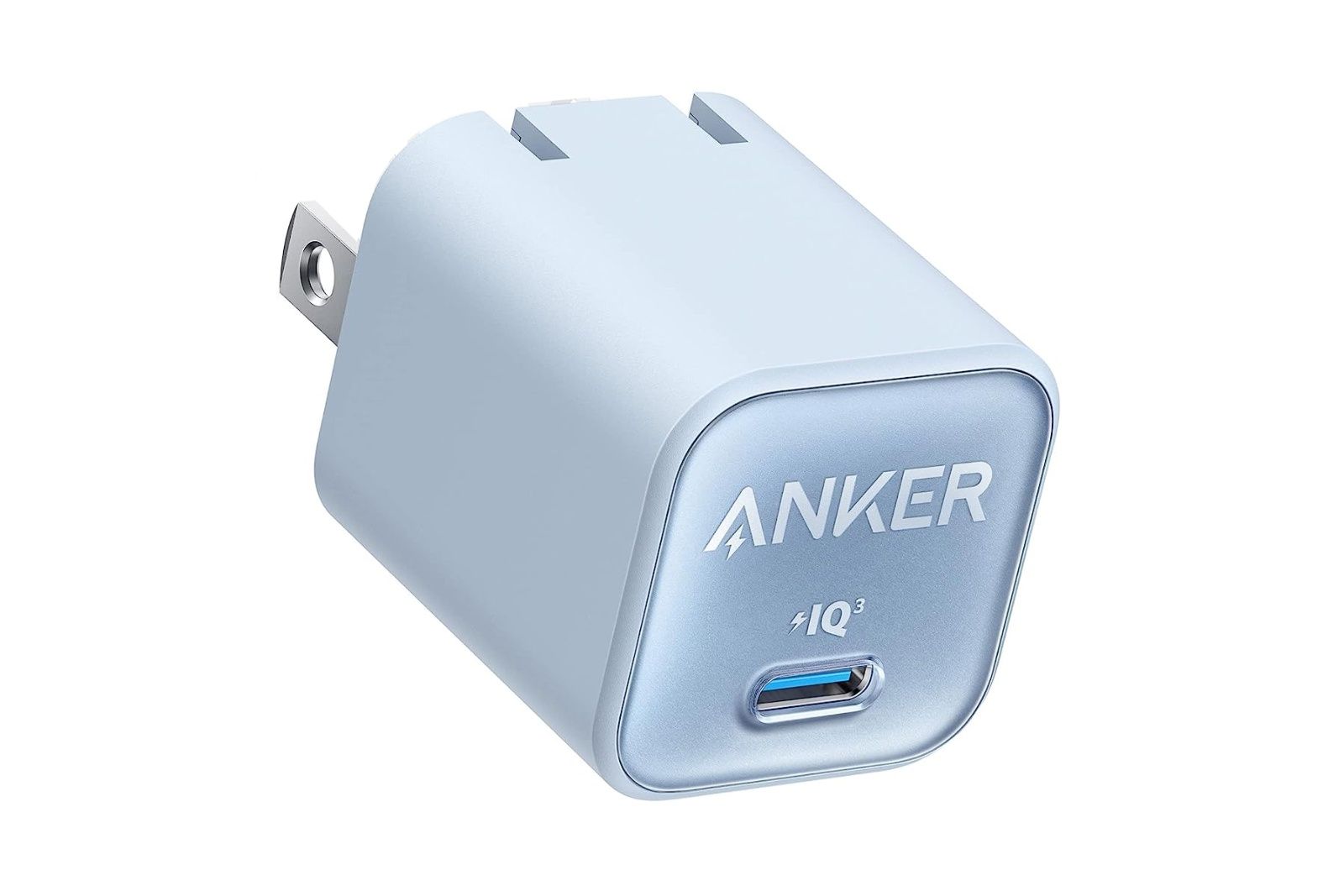
Anker / Pocket-lint
Anker 511 Charger (Nano 3, 30W)
5. Best single-port USB charger overall
Small but mighty
$20 $23 Save $3
It comes in five colors, the prongs folds into the body, and it’s oh so small because of the highly-efficient Gallium Nitride guts inside of it. Anker’s 30W Nano 3 adapter delivers all the power your new phone needs and then some.
- Maximum Power
- 30W
- Charging Ports
- 1 x USB-C
- Smart Features
- USB PD 3.0, Quick Charge 4+
- Smallest on our list to quick-charge most phones
- You can find it for under $20
- 30W isn’t as far as some phones go
Anker’s Nano range of adapters are impressively small and its single-port products can almost be described as cute – especially considering this one comes in five colors. This 30W model easily provides enough charge for your phone’s standard fast-charging levels. The company touts its proprietary PowerIQ 3.0 technology across multiple site and product listings as cross-compatible with Qualcomm Quick Charge and USB Power Delivery (with PPS support, too).
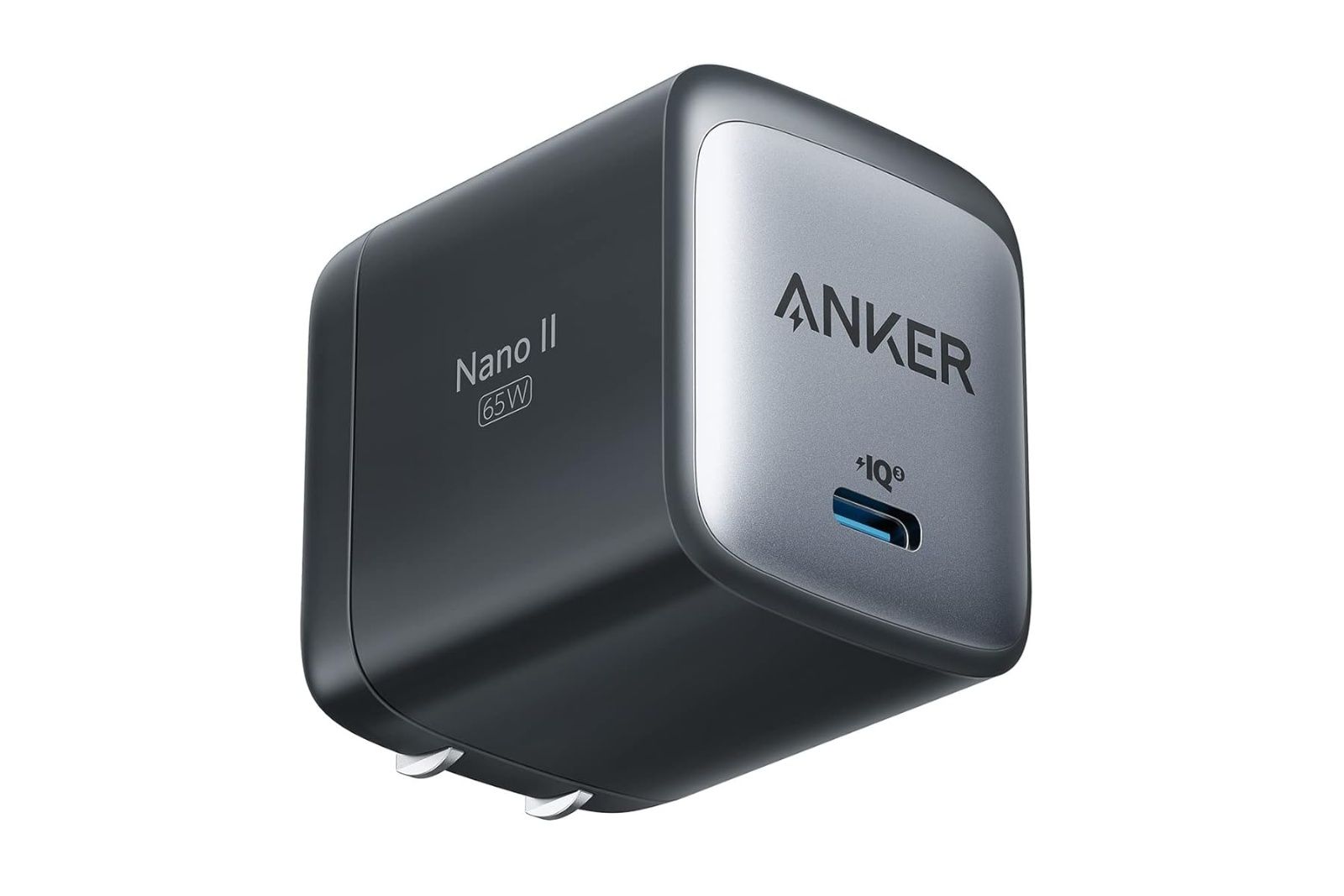
Anker / Pocket-lint
Anker 715 Nano II 65W Charger
6. Best single-port USB charger for power
Gives you the watts
Anker’s most capable single-port USB-C phone charger is still small enough to carry around everywhere you go. 65W will juice up devices like those from Samsung that support 45W PPS.
- Maximum Power
- 65W
- Charging Ports
- 1 x USB-C
- Smart Features
- USB PD 3.0, Quick Charge 4+
- 65W will charge phones and laptops perfectly
- Still a relatively easy carry
- You might want more ports at this price
Don’t look past Anker’s Nano II series of chargers just because they’re a tad older. This 65W model is enough to charge up a fair number of laptops that support USB Power Delivery through a Type C port – you’d be surprised just how many out there actually do. That said, at this wattage, you might be looking for some versatility with at least one more port. But if you’re happy to plug your phone into your computer for a slower drip, you might be able to get along with this adapter.
Bottom line: Which USB phone charger to get?
We’ve been emphasizing over and over throughout this piece that your needs will vary depending on how many devices you would charge at once and what kinds of devices you’re charging.
So, if you’re going to be a digital nomad and juggle multiple devices on a daily, even hourly basis, we would recommend the Ugreen Nexode 100W charger. It can charge an assortment of smaller devices such as phones, tablets, cameras, and drones all at once or keep a decent laptop running and happy. In other words, this adapter strikes a balance.

Ugreen / Pocket-lint
Ugreen Nexode 100W Charger
Editor’s choice for best multi-port USB charger
But if you’re just living on your phone and, after a long day, need to keep it running into a long night, we recommend Anker’s 30W Nano 3 charger as the easy choice. It’s a snug fit in certain pants pockets and a big motivator to actually make cargo pants fashionable.
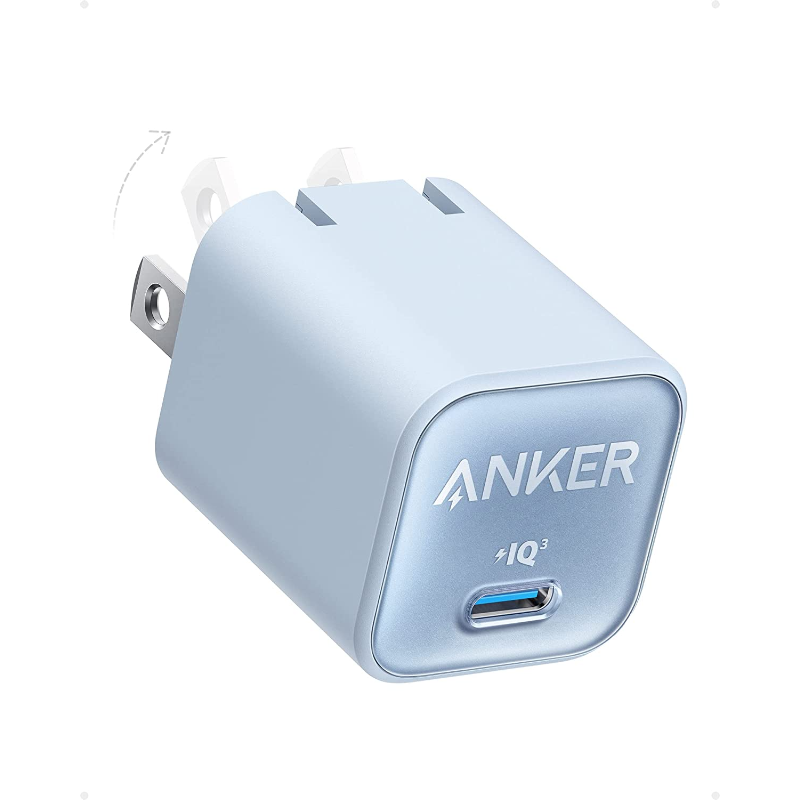
Anker
Anker 511 Charger (Nano 3, 30W)
Editor’s choice for best single-port charger
$20 $23 Save $3
How did we choose these phone chargers?
The Pocket-lint crew and I have put in the research in finding highly-rated adapters that cover a wide range of aspects that differing users value including size, ease of use, power capacity, and device load. Between all of us, we have had experience in using Anker, Ugreen, and Shargeek chargers – not all of them on this list, but enough of them for us to consider those names reliable.
What to look for when buying a USB phone charger
Regarding USB connector standards, Type C has come to rule the day pretty much everywhere. It’s tiny compared to full-size Type A and you don’t need to mind the orientation too much. Long-suffering iPhone owners in Europe have been able to upgrade away from Apple’s Lightning standard with the iPhone 15 series. All that said for Type-C, you’ll likely also have cables with Type A connectors because your laptop or desktop machine may have them. It’s a small consideration, but something not to forget.
For chargers with multiple ports, you’ll also need to know the maximum charge rates for each port. There may be a primary port that can deliver an advertised full rate and a lower rate when multiple devices are plugged in. Other ports may only support a lower maximum rate, even if only one device is on the charger.
Most importantly, read up on your device’s specifications. That includes the maximum input it can accept and which charging standards it supports. As we said at the top, some brands – especially those from China like Oppo, OnePlus, and Vivo – incorporate a proprietary charging technology like SuperVOOC into their power management stack. In those cases, the wall adapter plays key roles (most importantly as a heat sink) in achieving charge rates of 60W, 80W, 100W, or even more. You can use non-SuperVOOC chargers with those devices, but, at least in the case of OnePlus phones, the fastest you’ll be able to charge with them is at 18W.
What does Qualcomm Quick Charge mean for charging?
There are a lot of terms and acronyms to look out for in the charging world, especially when it comes to fast charging. In part, it’s because while fast, adaptable charging rates are a major priority in smartphones, unlike with desktop computers, we’re dealing with relatively small masses and more changeable, volatile climates. As the market leader (by a wide margin) in mobile application processors, Qualcomm came up with and has iterated on Quick Charge (yep, that’s the trademark), standardizing the voltage and amperage levels that adapters could use to deliver speeds greater than 10W to phones and tablets running on Snapdragon platforms.
The initial standard was implemented started in 2013, but the latest iteration, Quick Charge 5, came out in 2020. It can facilitate charge rates of 100W or more with temperatures up to 10°C cooler than previous versions. A Quick Charge 5 adapter is compatible and can fast-charge devices supporting previous versions. Qualcomm says you shouldn’t have to worry about connector types or the cable you’re using for Quick Charge. More details about cross-iteration compatibility are available from Qualcomm.
What do USB Power Delivery and Programmable Power Supply mean for charging?
Nearly at the same time as Qualcomm did, the USB Implementers Forum (USB-IF) came up with Power Delivery to expand fast charging standardization across more devices – namely, ones that don’t have their power managed by a Qualcomm chip, including phones, laptops, some cameras, and accessories.
USB PD release 3.1, which dates to 2021, brings new specifications for maximum single-port charging speeds between 100W and 240W – enough to even charge the most power-hungry of gaming laptops and changeable charging directionality. Unlike with Quick Charge, you’ll need to ensure that your cable (specifically, a Type-C to Type-C cable) is on the same page as your adapter and device to maximize your benefits. As we edge into 2024, manufacturers have yet to get 240W USB-C power adapters out to market, but we can expect them en masse soon enough.
Programmable Power Supply is a substandard of Power Delivery release 3.0. The short explanation of this is that it plays referee, ensuring the charger isn’t pushing more wattage than the device is requesting. Any extra, unused wattage manifests as heat and stresses the device’s battery. PPS’s goal is to lower that stress and prolong your battery’s useful life. Importantly, it has the leeway to adjust voltage levels by fifths of a volt across a range between 3.3V and 21V. It’s a great feature to have – so great, in fact, Samsung has adopted it into its own-brand fast-charge adapters.
If you’re buying a multi-port charger, you’ll want to check the product manual as some ports may not support the latest Power Delivery standard that was advertised. USB-A ports in particular may only support earlier Power Delivery and Quick Charge specs.
Trending Products

Cooler Master MasterBox Q300L Micro-ATX Tower with Magnetic Design Dust Filter, Transparent Acrylic Side Panel, Adjustable I/O & Fully Ventilated Airflow, Black (MCB-Q300L-KANN-S00)

ASUS TUF Gaming GT301 ZAKU II Edition ATX mid-Tower Compact case with Tempered Glass Side Panel, Honeycomb Front Panel, 120mm Aura Addressable RGB Fan, Headphone Hanger,360mm Radiator, Gundam Edition

ASUS TUF Gaming GT501 Mid-Tower Computer Case for up to EATX Motherboards with USB 3.0 Front Panel Cases GT501/GRY/WITH Handle

be quiet! Pure Base 500DX ATX Mid Tower PC case | ARGB | 3 Pre-Installed Pure Wings 2 Fans | Tempered Glass Window | Black | BGW37

ASUS ROG Strix Helios GX601 White Edition RGB Mid-Tower Computer Case for ATX/EATX Motherboards with tempered glass, aluminum frame, GPU braces, 420mm radiator support and Aura Sync










